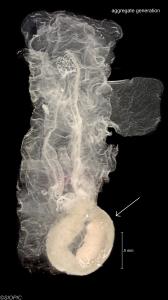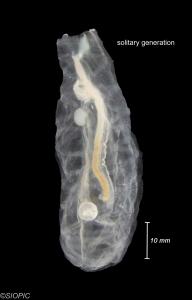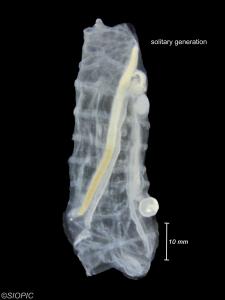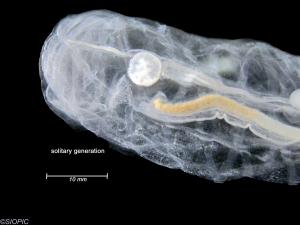Cyclosalpa affinis
The aggregate generation zooid possesses a very flaccid tunic, and the intestine is shaped in a broad loop. The solitary generation zooid also possesses a very flaccid tunic and elongate intestine or gut.
The aggregate generation forms circular chains connected to one another, and can be distinguished from the closely related species C. bakeri by the absence of posterior projections.
Bone, Q. (1998) The biology of pelagic tunicates. Oxford University Press, Oxford.
Wrobel, D. and Mills, C. (1998) Pacific Coast pelagic invertebrates: a guide to the common gelatinous animals. Sea Challengers, Monterey Bay Aquarium, Monterey, CA.
Yount, J.L. (1954) The taxonomy of the Salpidae (Tunicata) of the central Pacific Ocean. Pacific Science 8: 276-330.





